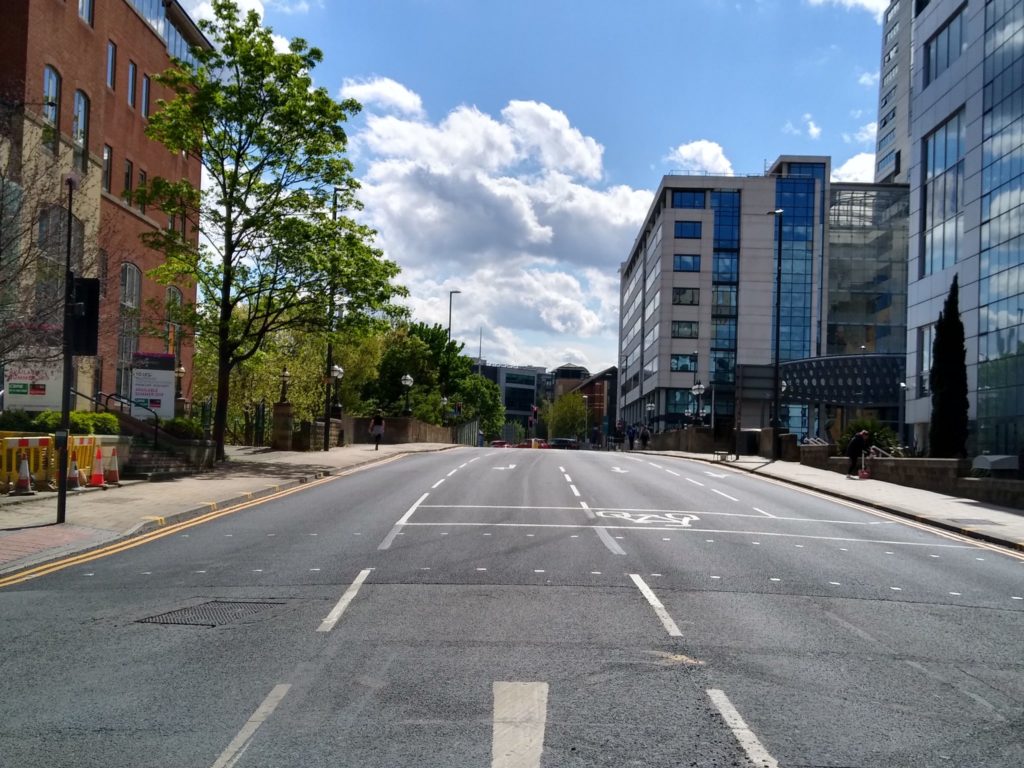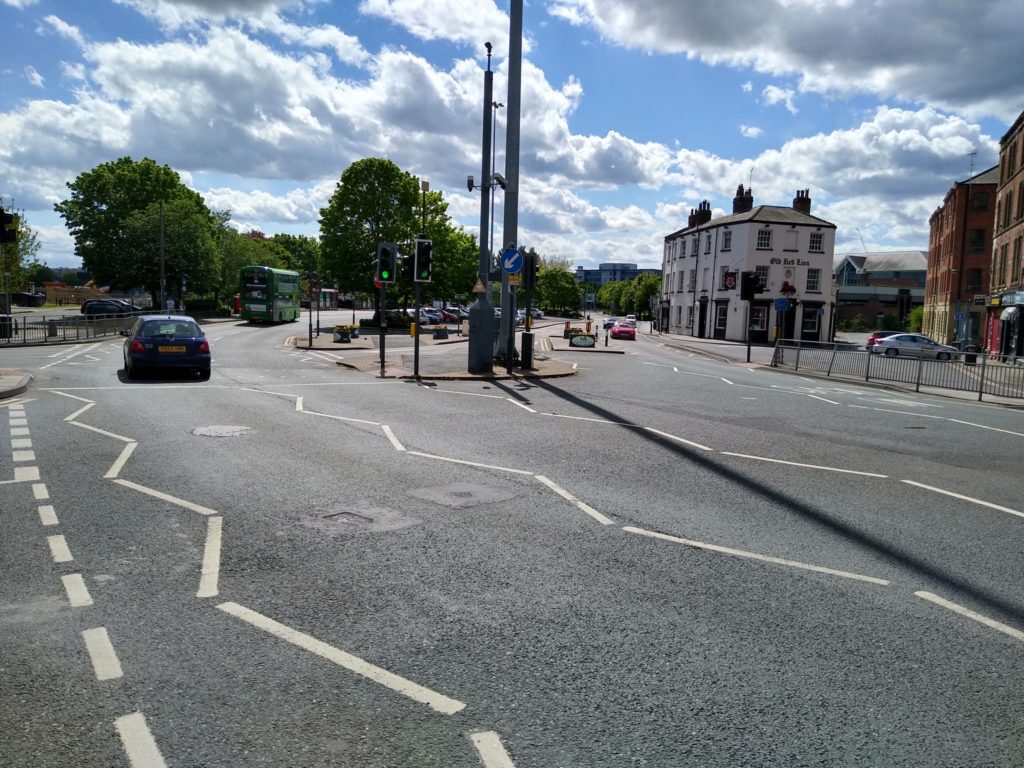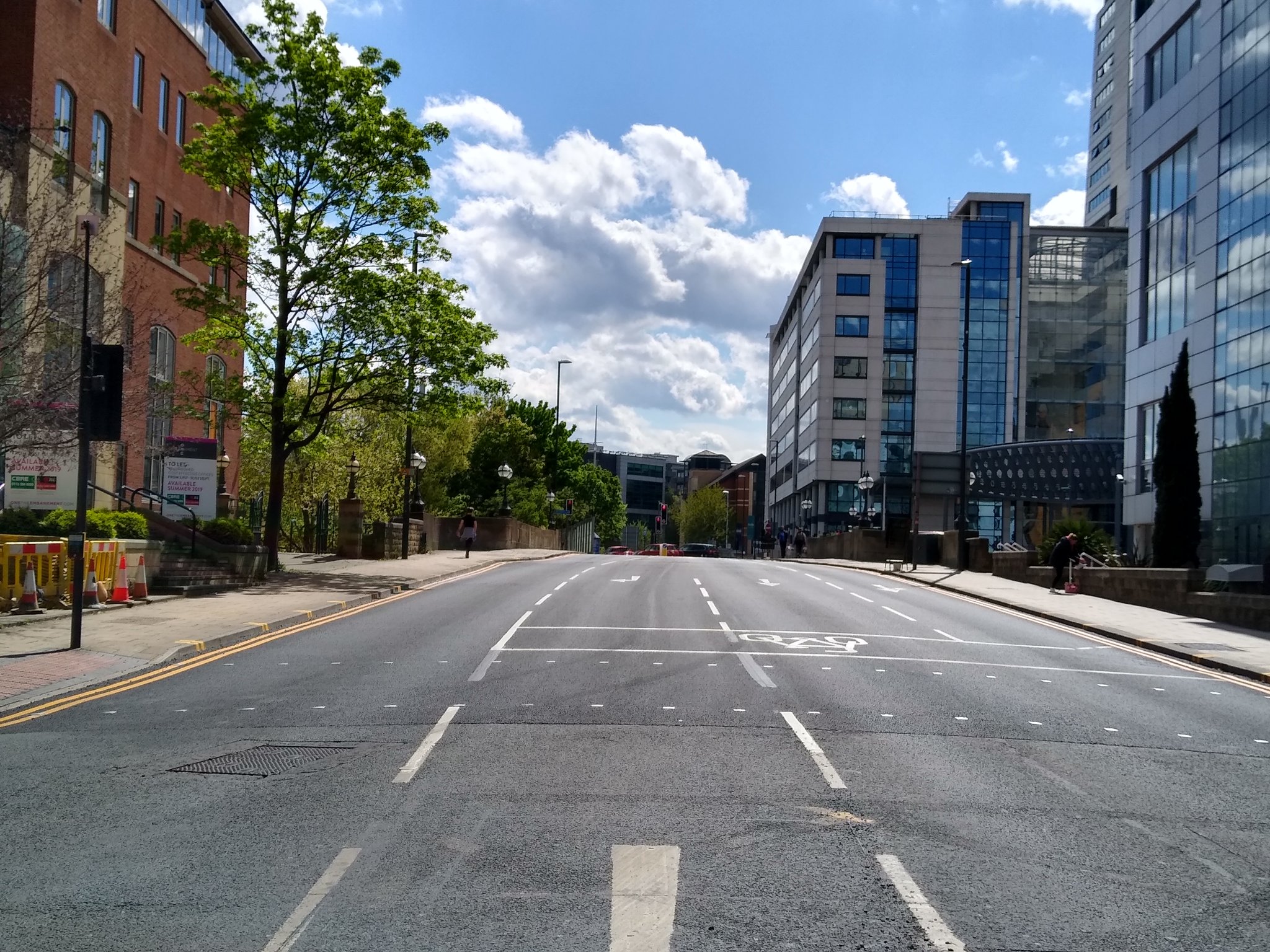Urban geographer and director of Leeds Walking Tours, Rachael Unsworth, asks how we can learn from the lockdown.
Across the UK, quite rightly, city leaders are planning for life after lockdown. Where I live, in Leeds, City Council Leader Judith Blake has told the Yorkshire Evening Post ’Our task will be to reset and restart the daily life of the city, and we are already planning on that in terms of how we can support businesses to resume and people to find work so our economy can begin to recover ...’
There will be a temptation to ‘crank up’ the engine for a return to business as usual. This would be a mistake. Obviously, the current situation is awful in all sorts of ways but, during recent weeks of disruption and distress, many of us from all walks of life, young and old, public and private sector and of all political persuasions have appreciated the silver lining of cleaner air and quieter surroundings. Will we continue with some elements of the greener way of life that has come as a by-product of lockdown? We were in any case living in a climate emergency, though too few have so far seen this as urgent enough to make significant changes in behaviour. Maybe now is the time.
Local movements, such as Our Future Leeds, are determined to turn this public health emergency into an opportunity to continue to reduce carbon-based energy consumption. For instance, rapid adaptations have been made to enable pedestrians and cyclists to share urban routes safely. By 22 April, proposed or actual measures like this had been recorded in over 130 cities around the world. More British cities should be doing the same.
And, critically, this will also help reduce carbon-based energy consumption. For example my home town, Leeds is already aware of opportunities to win back some land from excessively wide and complex roads and is implementing Our Spaces improvements. Leeds Civic Trust, inspired by examples elsewhere, is stimulating thinking specifically to address the potential of the Eastside area. One aim is to create sites for medium-rise, ‘gentle density’ affordable housing. The former industrial area of the South Bank comprises a range of sites at various stages of redevelopment. It’s not too late to make some strong strategic choices about how to design in liveability for the long term. The likelihood of future selective lockdowns should encourage planning for more self-contained neighbourhoods. Such places would be more sustainable even in less fearful times.
“Covid-19 is a re-evaluation and re-wiring opportunity. It won’t be much fun but it does give humanity an enforced chance to stop and think.”
Many town and city centre were already in difficulties because of the rapid evolution of online shopping. The shutdown has accelerated these trends. Plenty of shop premises have already changed use to accommodate businesses that are more about experience than buying ‘stuff’. There will be more repurposing of city centre premises, including conversion to much-needed housing. New residents in central areas will help to keep remaining retail viable.
During lockdown, so much work was rapidly brought home from offices to be carried out more or less effectively from kitchen tables, bedrooms and attics. Will this experience convince employers that more staff can be trusted to work remotely for more of the time? A significant proportion of staff are likely to want to retain at least an element of working from home. If this happens, even successful businesses will manage with a more modest increase in consumption of office space. It will mean, however, that many more households will require living space better suited to remote work. New housing designs should take this into consideration. There could be a revival of neighbourhood hubs in suburbs to provide more convenience outlets and perhaps hireable workspace for members of households without a way to partition family life and the demands of work. If it is more cost-effective than full-time commuting to a more distant location, this option can make sense for individuals and for organisations.
There is speculation that international travel will be slow to resume. Maybe some who have been able to hold effective remote meetings will reduce business travel? Many households will be strapped for cash and will have to cut down on foreign holidays. Even those who could afford to go abroad for leisure will perhaps be put off by the thought of being cooped up in aircraft, hotels or cruise liners with people who may be harbouring this potentially fatal virus. There will also be some enduring fear of being marooned far from home in the event of a sudden re-imposition of travel bans. The international flow of students will be markedly subdued. What will happen to unoccupied hotels and student residences as consortia rationalise their portfolios? Some have been repurposed during lockdown and there will no doubt be more of this ahead. There are so many people in need of residential accommodation, after all. Can we avoid the unethical paradox of homeless people sleeping in the doorways of empty buildings?
Those who do have a home may have felt it to be more like a prison than a refuge in recent weeks. All the more reason to think again about the way future housing and neighbourhoods are configured. There is value in even a small amount of outside space and in high quality surroundings. Those who have a front door giving onto a street that acts as a thoroughfare for pedestrians can at least maintain some sense of still being part of society, even if conversations with neighbours have to be carried out at an unusual distance. If you’re in a tower block, isolation is all the harder to bear.
There is a great deal of work to be done to reconfigure cities for a life after the shock of the 2020 lockdown. Pandemics will not, let us hope, be the new normal but they can help us think about what normal should be.
Rachael Unsworth is an urban geographer and Create Streets fellow. She has many years’ experience of researching and teaching about cities and is director of Leeds Walking Tours.



